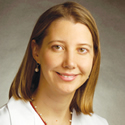The Truth About ADHD
Approximately 5%-10% of kids have attention-deficit hyperactivity disorder.
Children with ADHD have trouble paying attention in school, home or work. They are normally more active and impulsive than others their age.
These behaviors contribute to significant problems in relationships, learning and behavior.
Research shows that ADHD is more common in children who have close relatives with the disorder.
ADHD is more common in boys than in girls.
Recent research also links smoking, substance abuse during pregnancy and exposure to environmental toxins such as lead to ADHD.
Symptoms of ADHD include: difficulty following instructions or paying attention on work or play; losing things needed for activities; appearing not to listen; not planning ahead; forgetting things and being distracted and disorganized.
The child with ADHD who is hyperactive/impulsive will have these symptoms for at least six months: fidgety; can’t play quietly; blurts out answers; interrupts people; can’t stay in seat; talks too much; always on the go; and has trouble waiting his or her turn.
If you think your child has ADHD, talk with your pediatrician. A diagnosis can be made only by getting information about your child’s behavior from several people who know your child such as parents and teachers.
People who are unfamiliar with ADHD may tell you that ADHD is caused by bad parenting, too much sugar, playing video games or watching too much TV. But this is simply not true.
If your child is diagnosed with ADHD, you may need to change your home life to help your child.
Here are some things you can do to help:
• Make a schedule.
• Make simple house rules.
• Make sure directions are understood.
• Reward good behavior.
• Make sure your child is supervised all the time.
• Watch your child around his or her friends.
• Set a homework routine.
• Focus on effort, not grades.
• Talk with your child’s teachers.
To help your child with ADHD become a well-adjusted adult, it is important for parents to be loving and supportive and work with school staff and their doctors.

